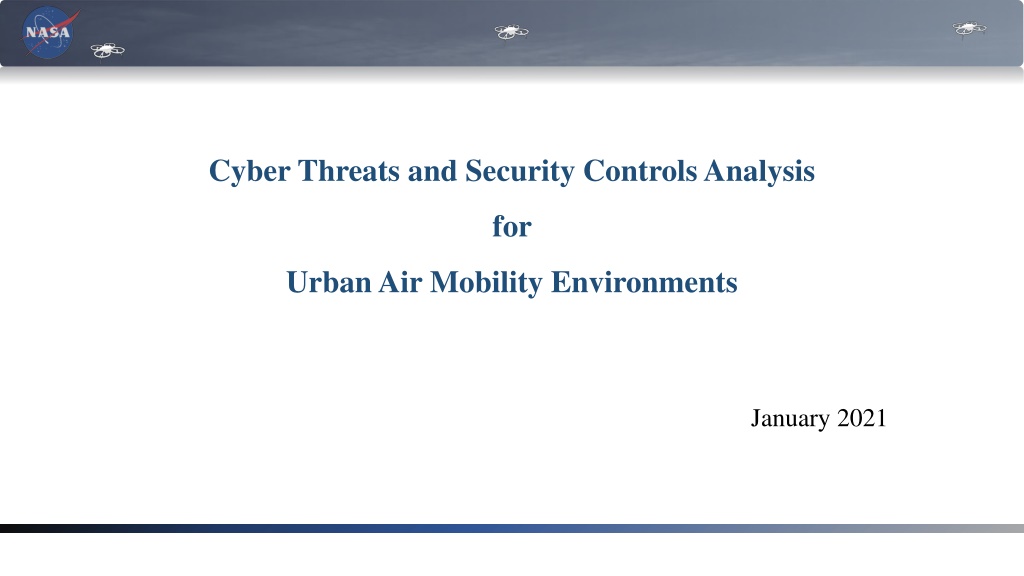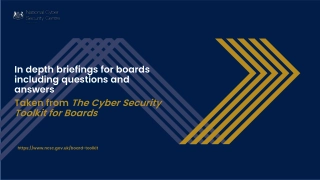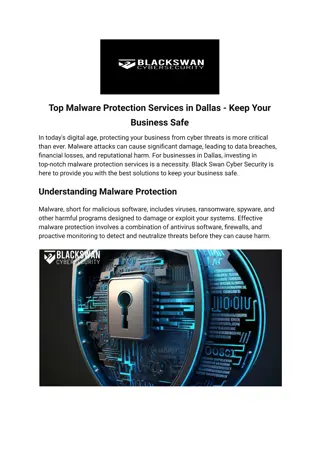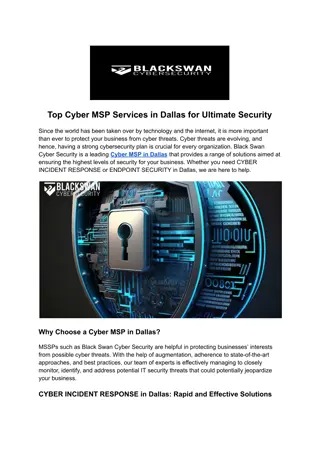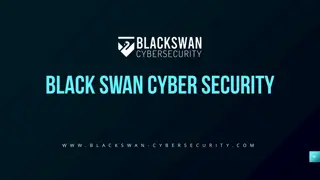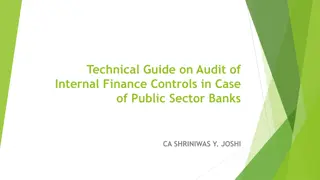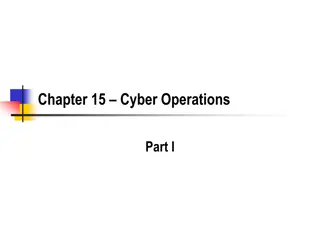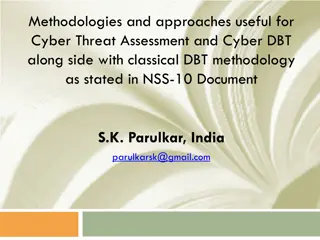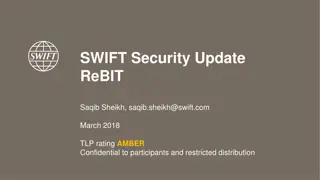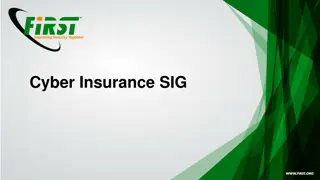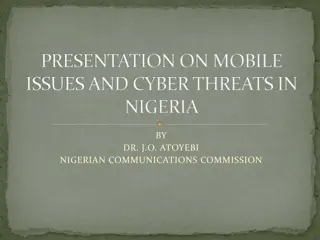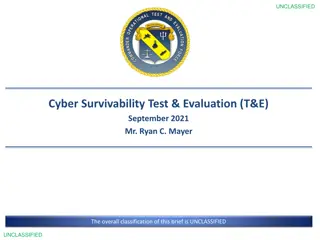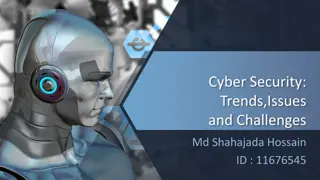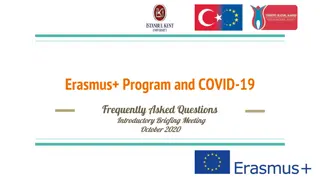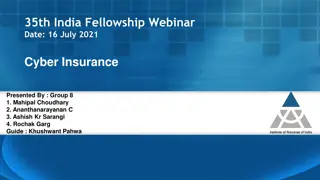Cyber Threats and Security Controls Analysis for Urban Air Mobility Environments
The Urban Air Mobility (UAM) environment, with its service-oriented architecture, faces various cyber threats related to end-users, cyber-physical systems, cloud services, and on-premise computing. Threats include unauthorized interception of data, phishing attacks, and Denial of Service (DoS) incidents. Leveraging the MITRE ATT&CK framework can help analyze these threats effectively.
Download Presentation

Please find below an Image/Link to download the presentation.
The content on the website is provided AS IS for your information and personal use only. It may not be sold, licensed, or shared on other websites without obtaining consent from the author. Download presentation by click this link. If you encounter any issues during the download, it is possible that the publisher has removed the file from their server.
E N D
Presentation Transcript
Cyber Threats and Security Controls Analysis for Urban Air Mobility Environments January 2021
UAM Environment The UAM environment has a service-oriented architecture where UAM operators and service providers work independently to mange aerial vehicles in the urban environment. The UAM environment is derived from the Unmanned Traffic Management (UTM) concept of operations. Providers of Services, UAM operators, and Supplemental Data Service Providers provide services to support flight operations within the UAM environment. Various views of UAM flight information are provided to the public and public safety entities. The FAA can coordinate flight information between the FAA controlled National Airspace System (NAS) and the UAM environments through the Flight Information Management System (FIMS) 2
UAM Environment UAM environments will consist of a wide range of diverse systems supporting flight missions The UAM environment can be viewed from the perspective of four significant high-level components, end-users, cyber-physical systems, cloud services, and on-premise computing services. Threats, vulnerabilities, weaknesses, and security controls for the UAM environment, are studied from these four components' perspective. The applicable threats, vulnerabilities, and weaknesses of the UAM environment's four component areas will differ due to the cyber- physical, cloud, and on-premise architectures. 3
Identified Threats for UAM Environments Cyber threats associated with End-Users are an ever-changing threat landscape The MITRE Adversarial Tactics, Techniques, and Common Knowledge (ATT&CK) model and framework can be leveraged to analyze threats to UAM systems Globally-accessible knowledge base of adversary tactics and techniques based on real-world observations of cyber security threats Sample UAM Threats The unauthorized interception or sniffing of a conversation, communication, or data transmission, leading to the loss of data confidentiality. Adversaries may attempt to position themselves between two or more networked devices using a man-in-the-middle (MiTM) technique to support follow-on attack behaviors such as Network Sniffing (leading to loss of confidentiality) or Transmitted Data Manipulation (leading to loss of data integrity). Adversaries may send deceptive email phishing messages, with the intent to to gain access to victim systems. A single system or multiple systems may be used to perform a Denial of Service (DoS) or Distributed Denial of Service (DDoS). The purpose of the attack is to degrade or block the availability of services to users. Eavesdropping Man in the Middle Attacks (MITM) Phishing Attacks Distributed Denial of Service (DDoS) 4
NIST Computer Security Resource Center National Institute of Standards and Technology (NIST) Computer Security Resource Center (CSRC) NIST Special Publication 800-53 Security and Privacy Controls for Federal Information Systems and Organization NIST Cybersecurity Framework 5
Cyber Security Framework NIST Cybersecurity Framework (CSF) provides a common language for understanding, managing, and expressing cybersecurity risk Identify Manage cybersecurity risk for the UAM environment systems, people, assets, data, and capabilities. Protect Appropriate safeguards to ensure the delivery of critical services. Detect Identify the occurrence of a cybersecurity event. Respond Actions regarding a detected cybersecurity incident. Recover Timely recovery to normal operations to reduce the impact from a cybersecurity incident 6
NIST Special Publication 800-53 Security controls are safeguards/countermeasures for information systems Protect the confidentiality, integrity, and availability of information Satisfy a set of defined security requirements Reflect the objectives of the information and system to be protected All laws, executive orders, directives, regulations, policies, standards, guidance, and mission or business needs are considered Security and privacy controls could change with changes to the system and should be removed, revised, and added as necessary 7
Safeguards and Countermeasures Sample UAM Threats with Safeguards and Countermeasures Encrypting data in transit is a safeguard against eavesdropping Cryptographic key exchange is required for encryption to work across organizations. As a result, methods to ensure safe keeping of the keys is critical as well. Eavesdropping UAM environments comprise of highly automated systems using application programming interfaces (APIs), to enable data exchange. As new services are added, new APIs need to be developed and tested for vulnerabilities, that could lead to system access Man in the Middle Attacks (MITM) 8
Safeguards and Countermeasures Sample UAM Threats with Safeguards and Countermeasures Security controls such as cybersecurity literacy training and awareness need to be implemented. Practical exercises include social engineering attempts to collect information, gain unauthorized access, or simulate the adverse impact of opening malicious email attachments or invoking malicious web links Phishing Attacks Implementing the appropriate security detection methods for identifying DDoS attacks is critical to detecting the attack. Countermeasures, such as , implementing temporary automatic lockouts initiated by the systems, when the maximum number of attempts are exceeded. Distributed Denial of Service (DDoS) 9
